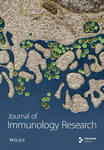Proliferative Responses of Harbor Seal (Phoca vitulina) T Lymphocytes to Model Marine Pollutants
Abstract
In recent years, population declines related to viral outbreaks in marine mammals have been associated with polluted coastal waters and high tissue concentrations of certain persistent, lipophilic contaminants. Such observations suggest a contributing role of contaminant-induced suppression of cell-mediated immunity leading to decreased host resistance. Here, we assessed the effects of the prototypic polycyclic aromatic hydrocarbon (PAH), benzo[a]pyrene (B[a]P), and two polychlorinated biphenyls (PCBs), CB-156 and CB-80, on the T-cell proliferative response to mitogen in harbor seal peripheral lymphocytes. Despite the variability associated with our samples from free-ranging harbor seals, we observed a clear suppressive effect of B[a]P (10 uM) exposure on T cell mitogenesis. Exposures to 10 uM CB-156 and CB-80, and 1.0 and 0.1 uM B[a]P, did not produce significant depression in lymphoproliferation. Exposure to the model PAH at 10 uM resulted in a 61% (range 34-97%) average reduction in lymphoproliferation. We were able to rule out a direct cytotoxic effect of B[a]P, indicating that observed effects were due to altered T cell function. Based on our in vitro results, we hypothesize that extensive accumulation of PAH by top-trophic-level marine mammals could alter T cell activation in vivo and impaired cell-mediated immunity against viral pathogens.




